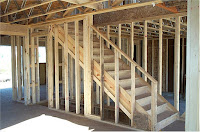Construction of single-family homes is expected to gradually rise this year, as a growing economy, solid employment gains and rising household formation buoys builders' forecasts.
Last year, the National Association of Home Builders projected 1.16 million total housing starts in 2016, which was up nearly 5 percent from the previous year. Now NAHB is forecasting a 10 percent increase in single-family production for 2017 and a 12 percent rise for 2018.
Still, there will be pressing challenges as builders look to increase their supplies this year.
"While positive developments on the demand side will support solid growth in the single-family housing sector in 2017, builders in many markets continue to face supply-side constraints led by the three Ls – lots, labor and lending," says NAHB chief economist Robert Dietz. Sixty-four percent of builders reported "low" or "very low" lot supplies. "The industry needs to recruit more workers and get more land in the pipeline, but it will take time."
Builders are particularly facing challenges building $200,000-range entry-level homes. Regulatory requirements comprise nearly 25 percent of the cost of a new home, which has made construction on lower-cost homes more difficult, Dietz says.
Nevertheless, townhome construction, which tends to appeal to younger buyers, is already showing significant growth, comprising 12 percent of all single-family starts, Dietz notes.
"As millennials age, that is a big potential base to expand the home buyer market," adds Frank Nothaft, CoreLogic's chief economist.
While higher mortgage rates may soften demand this year, builders remain upbeat. NAHB forecasts mortgage interest rates to average 4.5 percent in 2017 and then 5.3 percent in 2018.
"Higher mortgage rates will be offset by stronger wage gains and job growth, which suggests that housing demand will increase this year," says David Berson, chief economist for Nationwide Mutual Insurance Co. "The question is: How much will supply go up?"
Many metro areas nationwide are seeing solid job growth, dropping mortgage delinquency rates, and strong housing price gains, Berson notes. He says demand has been exceeding supply and likely will continue to do so in 2017. That could put more pressure on home prices, however.
"If there aren't enough homes on the market, that will be a problem," Berson syas. "Price gains need to moderate. We can't have 6, 7, or 8 percent gains. That is not sustainable."
Source: National Association of Home Builders

Comments
Post a Comment